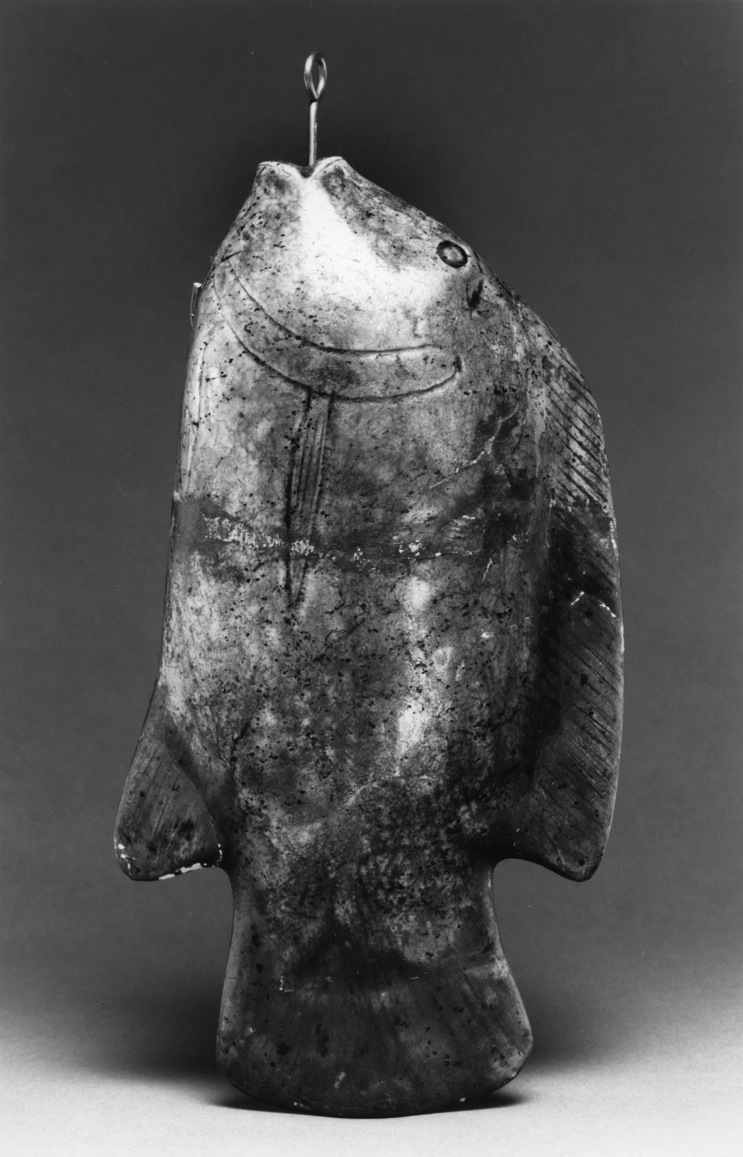Tilapia Fish
(Ancient Egypt and Nubia )
This life sized steatite fish, glazed a deep blue green color, which represents the tilapia nilotica or "bolti" fish. It appears that details such as the fins, gills and eyes were carved into the stone prior to glazing. A hole has been bored in the mouth region, emerging underneath the gills on the underside of the fish; this hole may have accommodated a rope or wire of some kind. The glaze has been rubbed off in the mouth region. This fish may have served as a vessel or ritual object.
Provenance
Provenance (from the French provenir, 'to come from/forth') is the chronology of the ownership, custody, or location of a historical object. Learn more about provenance at the Walters.
Dikran Kelekian, Paris and New York; Henry Walters, Baltimore, 1912, by purchase; Walters Art Museum, 1931, by bequest.
Exhibitions
| 1982-1983 | Egypt's Golden Age: The Art of Living in the New Kingdom (1558-1085 B.C.). Museum of Fine Arts, Boston, Boston; Houston Museum of Natural Science, Houston; The Walters Art Gallery, Baltimore. |
Conservation
| Date | Description | Narrative |
|---|---|---|
| 9/30/1981 | Examination | examined for condition |
Measurements
H: 6 5/8 in. (16.8 cm)
Credit Line
Acquired by Henry Walters, 1912
Location in Museum
Accession Number
In libraries, galleries, museums, and archives, an accession number is a unique identifier assigned to each object in the collection.
In libraries, galleries, museums, and archives, an accession number is a unique identifier assigned to each object in the collection.
48.1534


